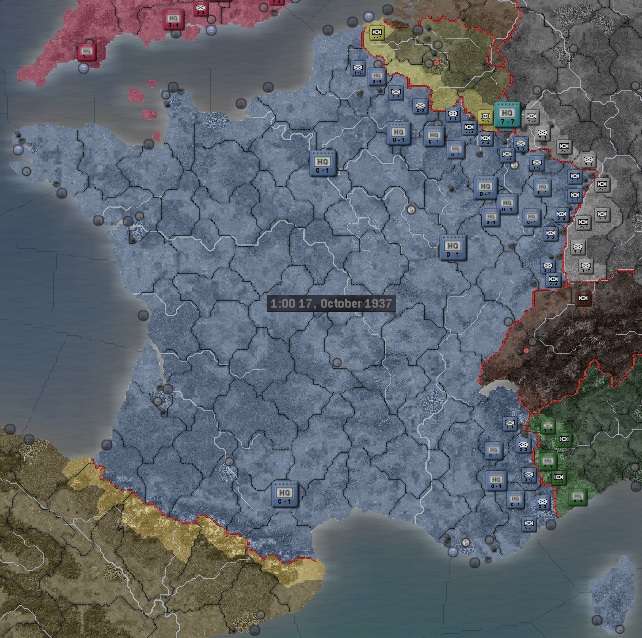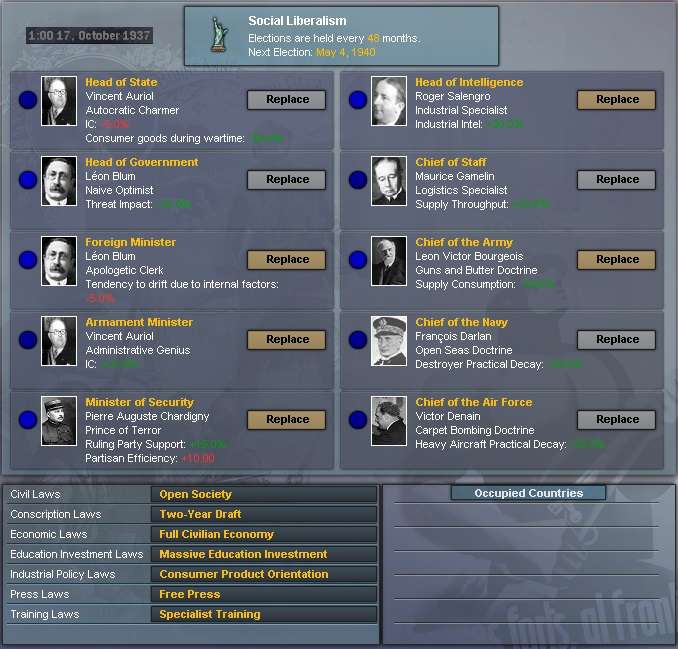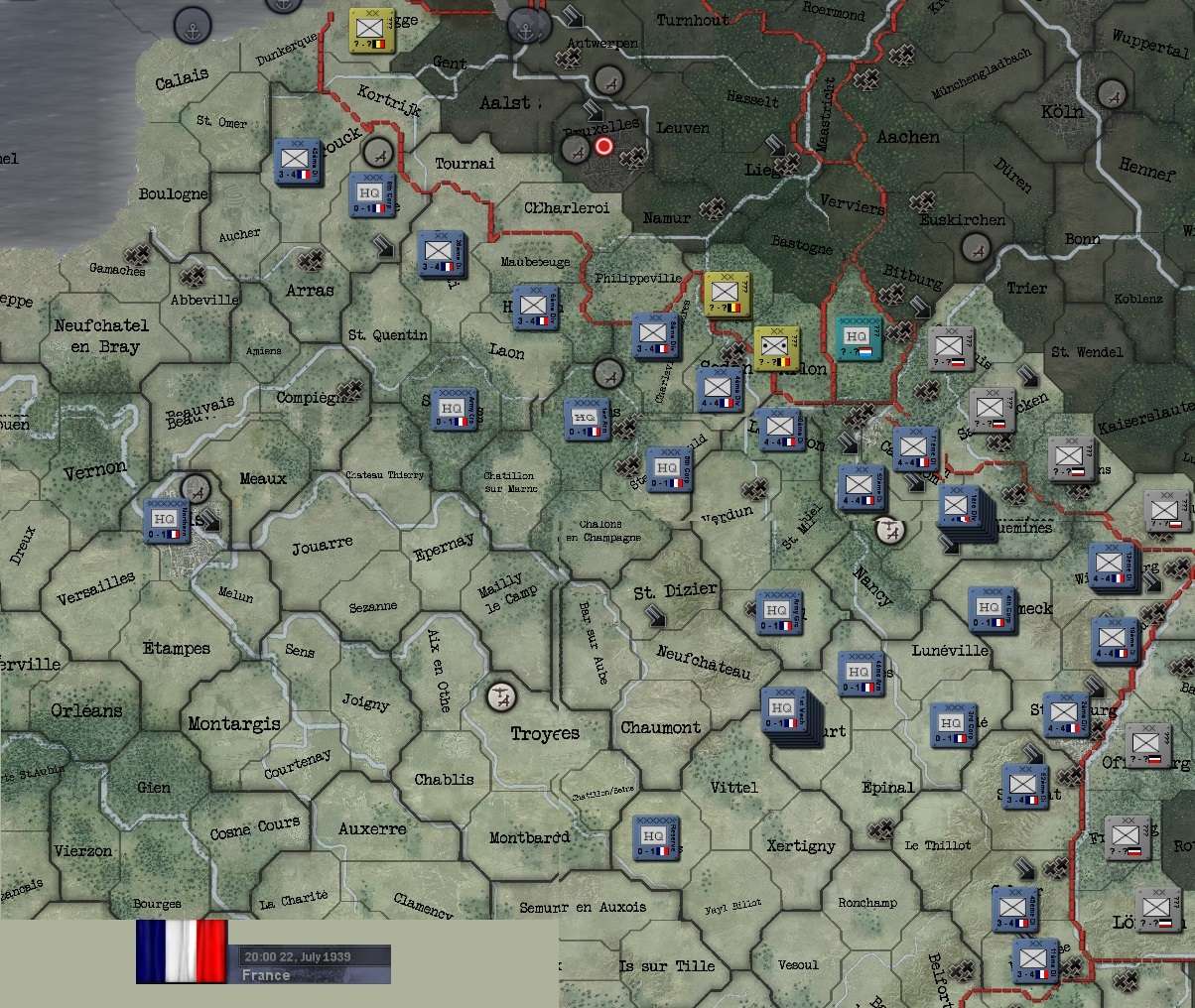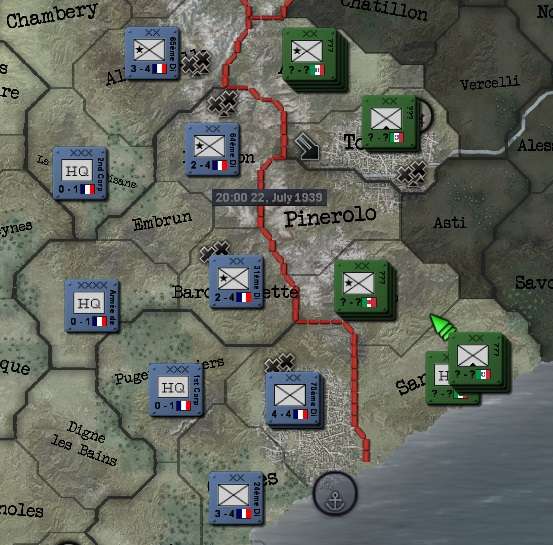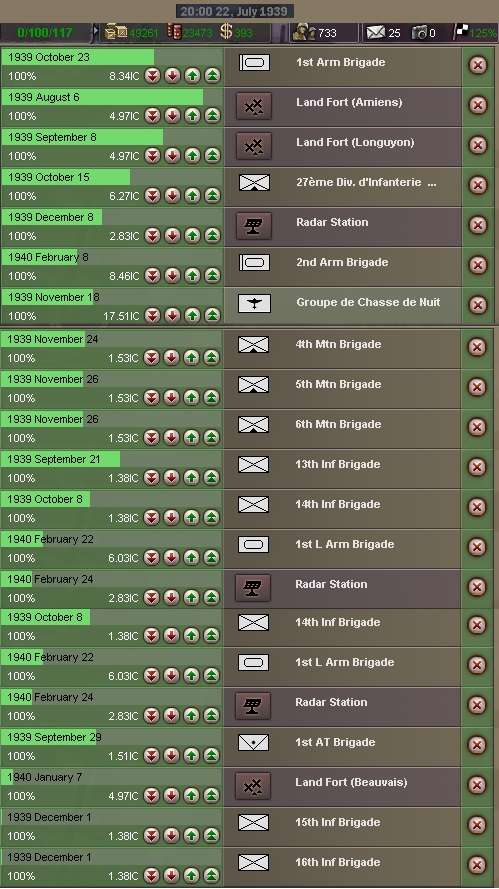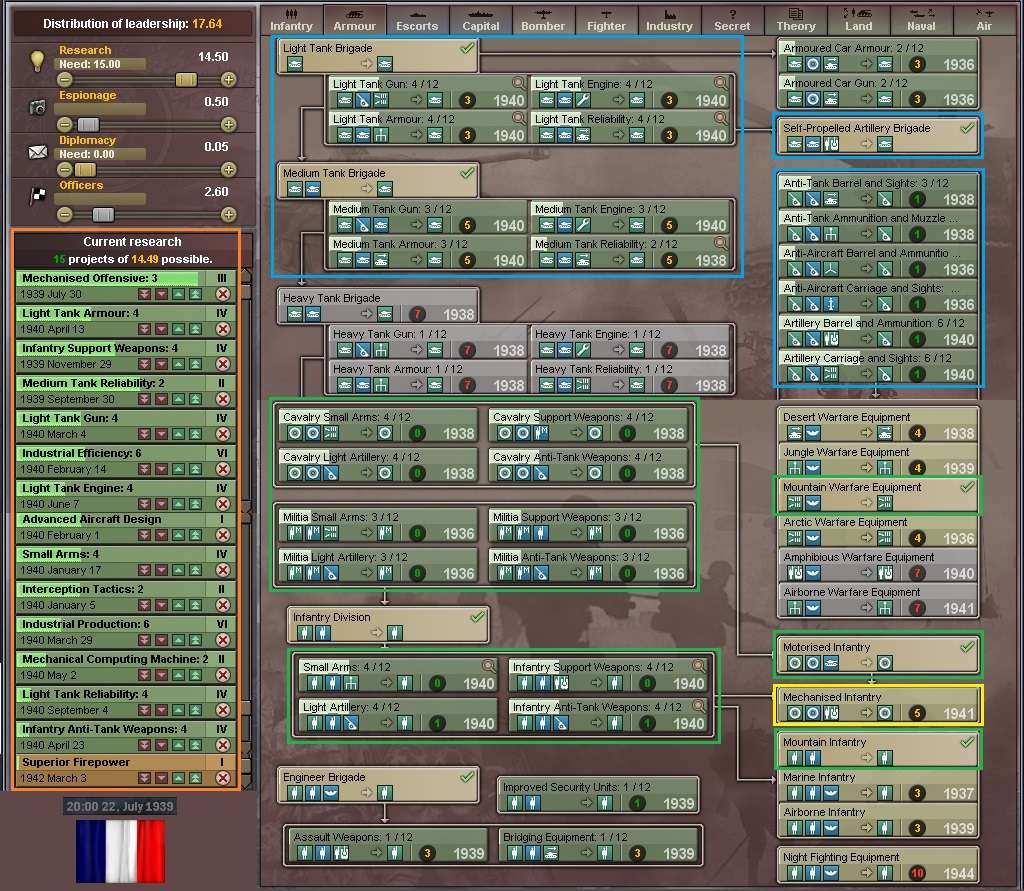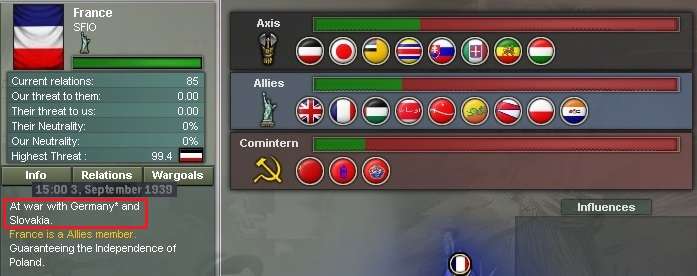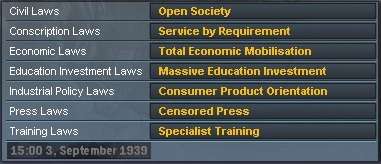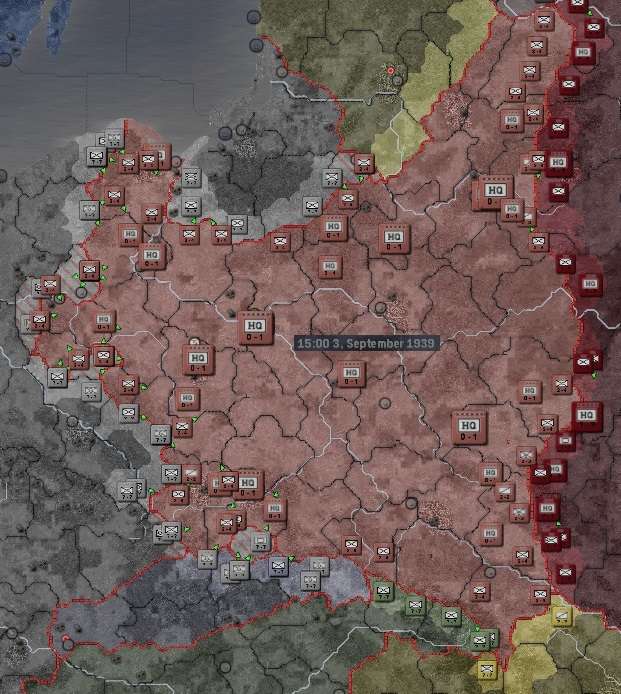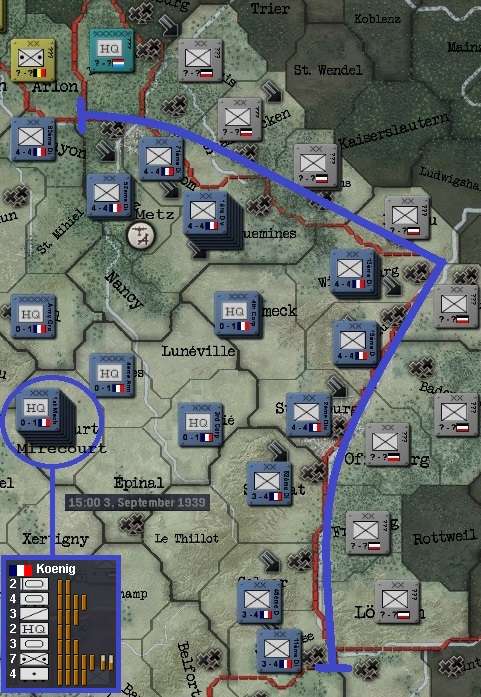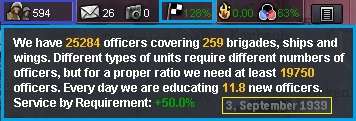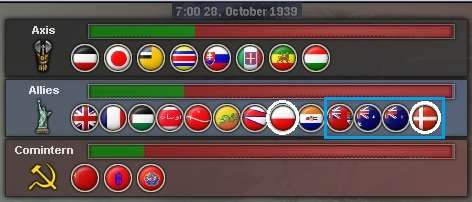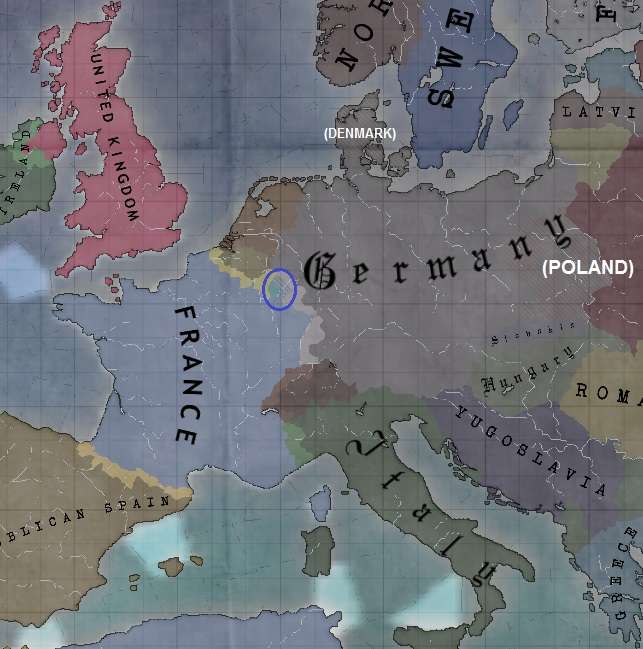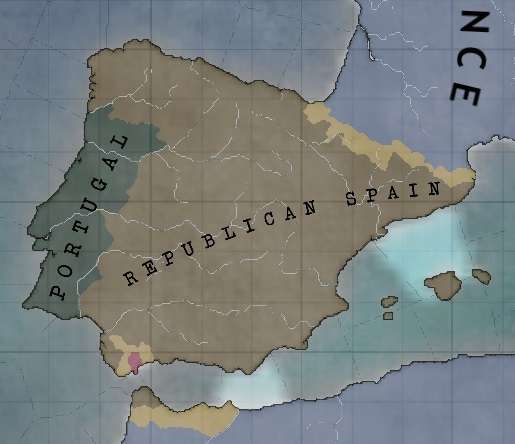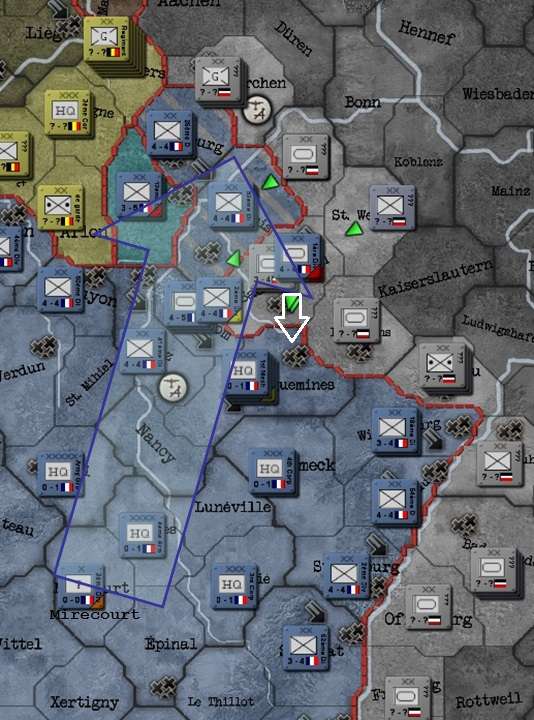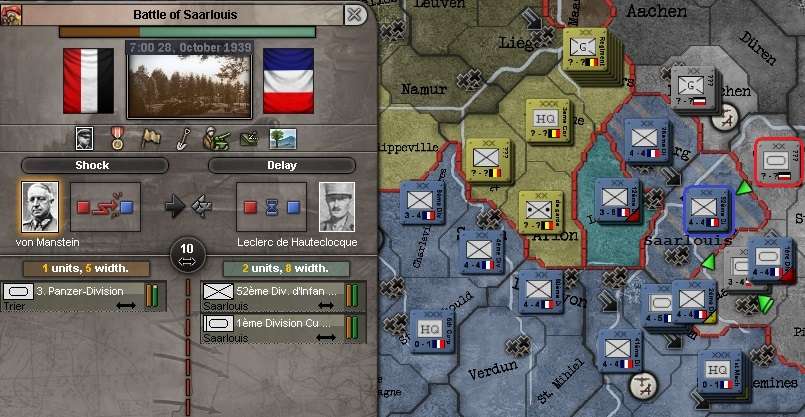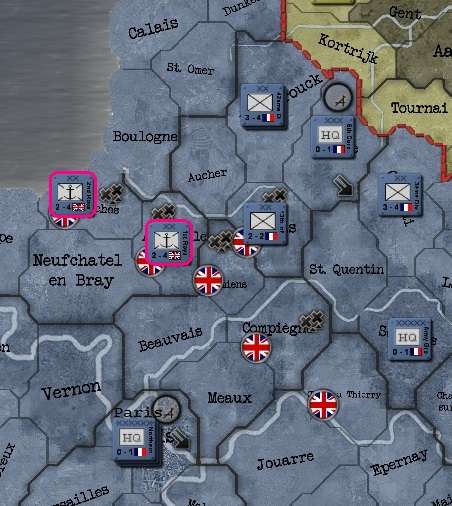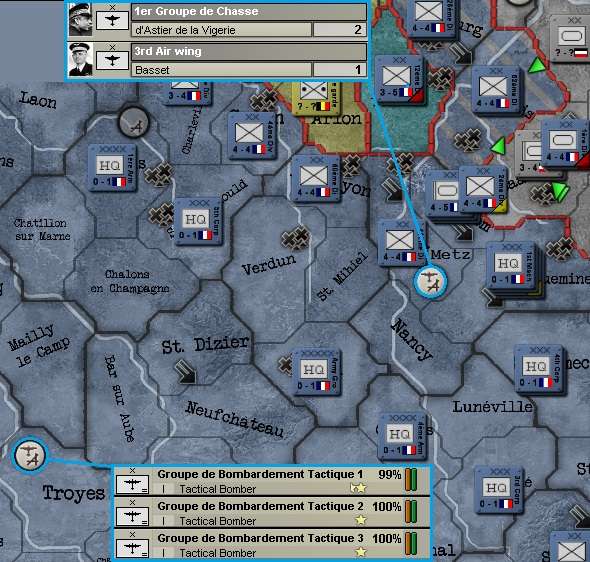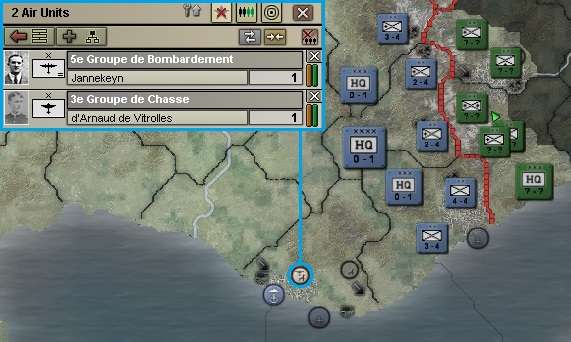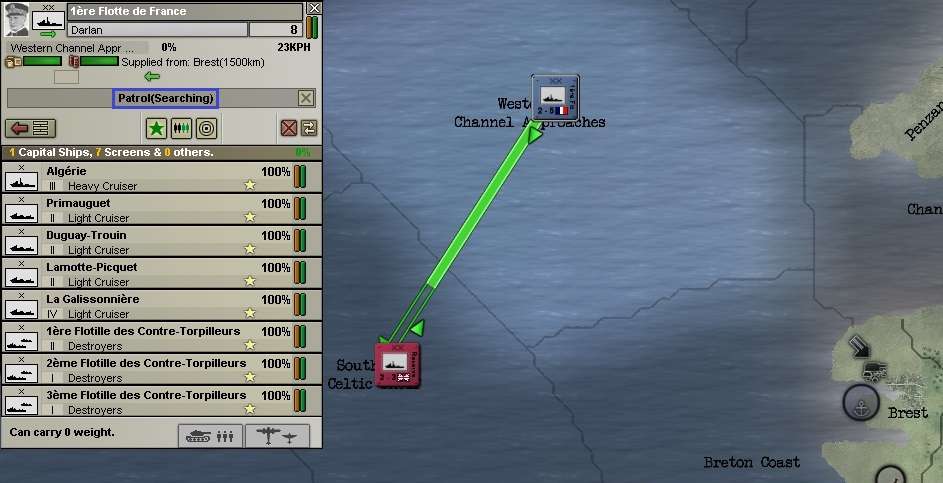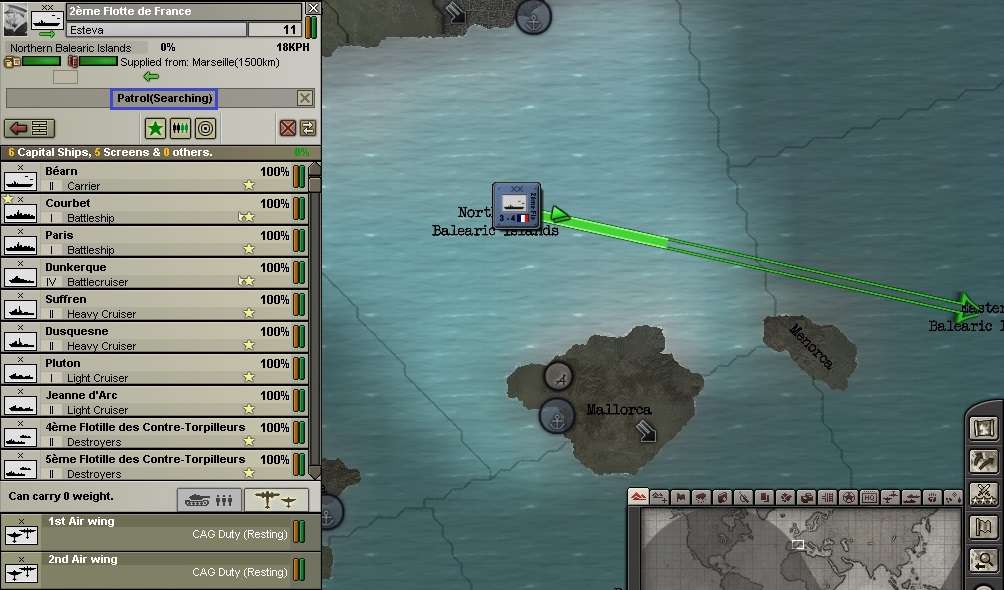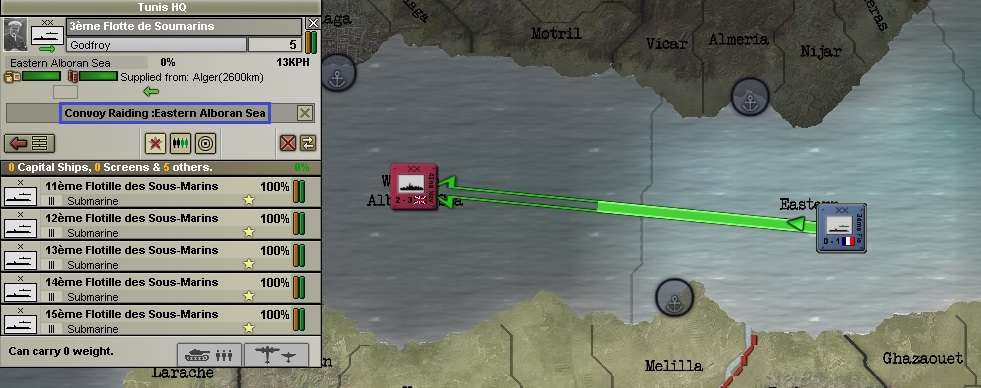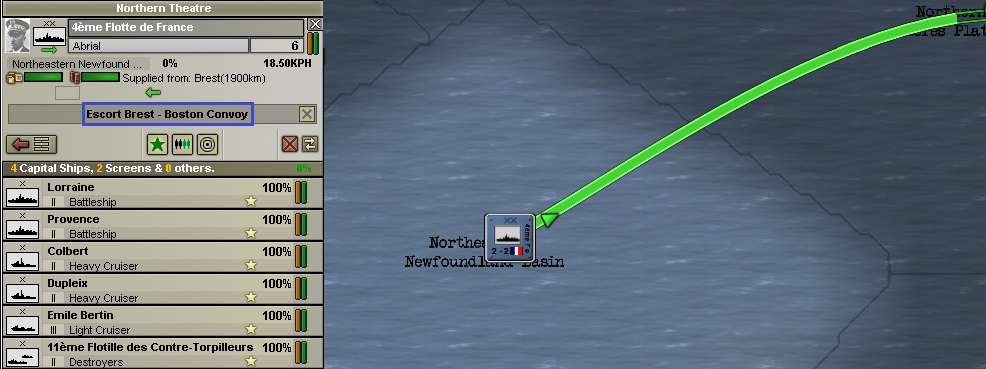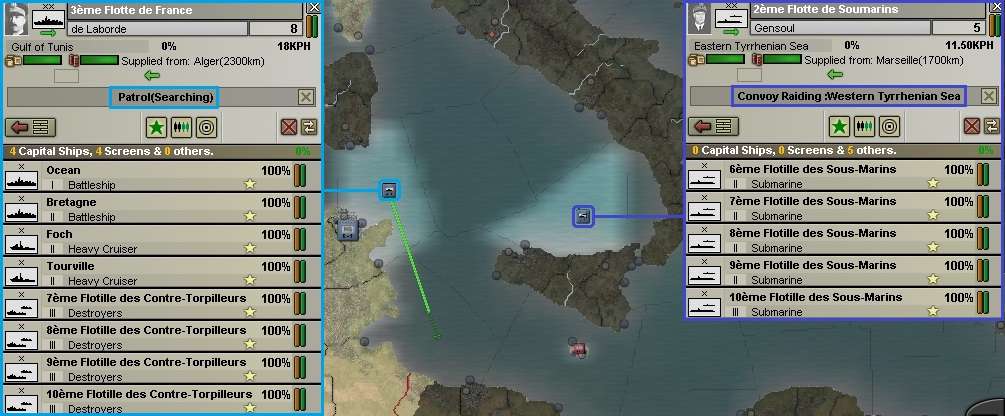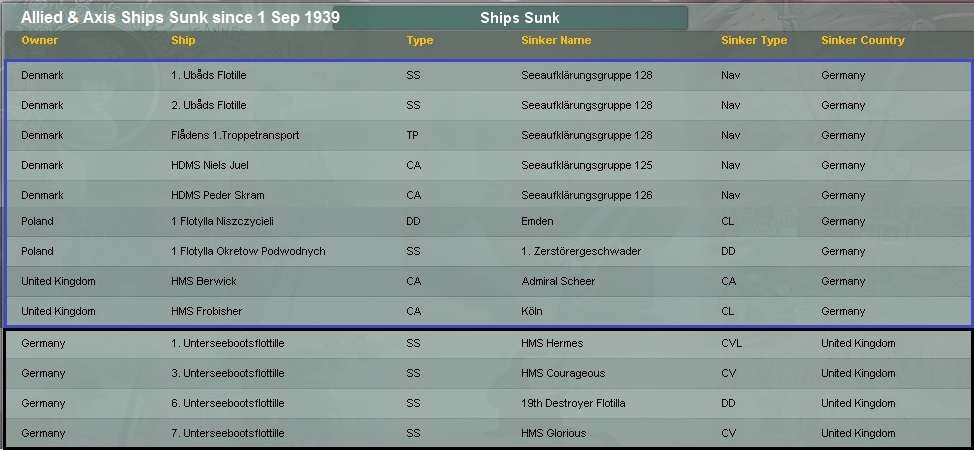Episode 1: January 1936 to September 1939
All, this is a ‘holiday project’ I’ve been meaning to do for some time. This was the game I played (and completed) just before I started playing Turkey in my current ‘Talking Turkey’ HOI3 AAR. Fortunately, I had kept the saves, so this report just dips into those at key points to illustrate the story.
Unlike Talking Turkey (which is 'live play', episode by episode), this is a game I completed and thought I’d write up as a quick, bare bones, game play and short history AAR. No narrative, characters, photos, detailed battle description, etc. Just a true
After Action Report on my
fourth attempt to play France –
all having failed abjectly before then!
By now, I had come to believe that France was not much more likely to survive the Blitzkrieg than Poland, but thought I’d give it one more try. But I had become a little more familiar with the game by then and had learned a few lessons from previous failed attempts and had read a few other France AARs (having been only a lurker up to that point on this forum).
Given those failures, and to start at ‘par’, this game was played at
Normal level. The game objective was simple: France to survive and lead the fight to a Democracy World Order (12/15 victory conditions).
This is what happened. In brief.
October 1937
After the usual reorganisation of the order of battle and command structure, this is how things stood in 1937. There were no fancy plans for early interventions or such like. The previous game had been an attempt to save the Czechs and see what would happen if France prepared to attack early while the Czechs fought on. It ended in abject failure, with France conquered a year early (at least) from memory.
So this time, the plan will be to defend along the river lines of northern France, prepare defences (forts) to extend a ‘Maginot Line Light’ west from Metz, concentrate on the land army (infantry and mech/armoured tech and building) and see if the storm could be weathered until the Soviet Union joined the war. And ensuring we don’t have the Italians storm through a too-weakly-held southern front – which had also happened to me previously. Still very early days here, production still quite low as units are upgraded (I wanted quality).
Above is the Government entrusted with this task. Vincent Auriol wouldn’t have been my first choice for President! But there was no choice, so bad luck! Funny, as President he is -5% IC and as Armament Minister is an Administrative Genius with +10%. Go figure!
And above is the leadership allocation at this time. Mainly land unit and doctrine techs. Some offensive ones, for the mechanised counter-attack (it will form a key part of the defensive plan this time) and later, a hoped-for strategic offensive. One can dream! The other key focus is on Officer Training – I want that high too.
July 1939
As the storm clouds gather, France does its best to prepare for war. You can see the reserve defensive line in preparation north of Paris and west of Metz. The plan is to fight a contested withdrawal back to them as a last line of defence, using favourable terrain (rivers, forts, woods etc) to slow the Germans down as much as possible and buy time. We’ll be calling on our British Allies to send an expeditionary force, which is hoped can help hold the western part of the line, allowing us to reinforce the vulnerable centre facing the Belgian border.
The position on the Italian border has been reinforced but it will need more to be secure. There are more mountain brigades on the way, with four due to be produced by the end of November (see below). This should be well before any likely declaration of war by Italy. We hope.
French production is now up to a healthy 117 IC off a base of 100. Officer strength is up to 125% - quite satisfactory, but with a large swag of units coming on line. More forts are in production, with two key ones due in August and September. We’ll have a look at progress on the
Western Line soon. Earlier production had boosted artillery and anti-tank holdings, so that most front line Maginot Line divisions in the areas most under threat had either an artillery or anti-tank brigade attached to its three infantry divisions. Other than the Alpine brigades for the southern front, most remaining production concentrates on infantry and armoured units. Hoping also to use a radar outpost to improve early warning and air interception, eventually.
With technology, key capabilities in the armoured area are shaded in blue. Of note, light armour is almost up to date and medium armour also on the way. SP Artillery can be built but is not yet a focus. Anti-tank has had some development, but Artillery has been brought up to date. Infantry capabilities are in green. With cavalry at L3 and Motorised infantry available and mech infantry able to be researched when ready, it will not be further pursued. Nor will militia training. Basic infantry equipment is reasonable, if not all at full current levels yet. Some aircraft research is being done, in the hope of at least being able to keep interceptors in the air at some point – though no great hopes there. There are few engineer brigades dotted around the army, but these are not a key research focus.
September 1939
London is on the radio again: now war is declared, and battle come down!
This enables the usual wartime laws to be introduced, with a welcome boost to production, conscription and training especially.
After a few days of war, Poland is already being nibbled at and has much of its army in the east. They are right to be suspicious of the Soviets, but it won’t help them stop the Nazi’s and their henchmen. Alas, France does not believe it can do much to help them – yet, anyway. She first needs to survive and for that needs to buy time.
The Maginot Line is being held reasonably thinly in the south-east, where the terrain is more favourable. From the ‘corner’ and west towards Metz, it is more heavily garrisoned – this is where the first hammer blows are expected. Sarreguemines is held by four infantry divisions and two spare brigades, which are still mobilising. It is the principal front line infantry reserve for that sector. The main mobile reserve is in Mirecourt. From here, they are available to either reinforce or counter-attack anywhere along the Maginot Line. Four of the divisions there are equipped with SP artillery, to bolster hitting power without sacrificing speed.
The Western Line has by this stage been partly constructed. The map below shows both unit dispositions and fortification lines – completed (orange) and under construction (yellow). These are of course dwarfed by the Maginot Line (The Metz-Sarreguemines portion can be seen, in blue, to the east), but they are better than nothing. Where they can, they attempt to reinforce natural river lines of defence. Some depth defence is being prepared north of Paris in Beauvais, just in case.
And at this stage, officer levels are up to 128%, manpower is now down to 594 (and will continue to decline as full mobilisation is reached). National Unity is at a reasonably healthy 63%.
The next episode will cover the beginning of the war, the fate of Poland and whether the War in the West is phony or real.


